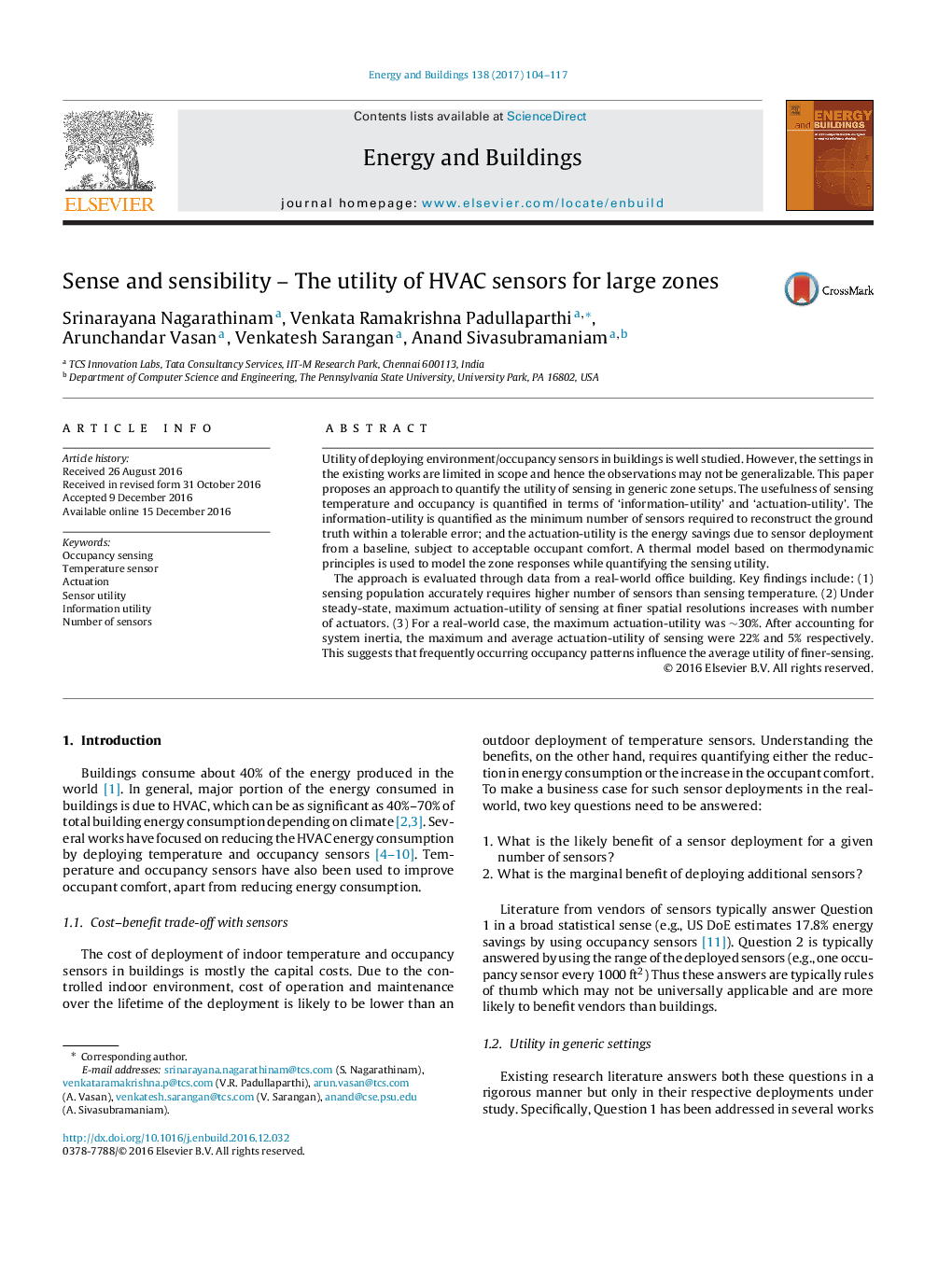| Article ID | Journal | Published Year | Pages | File Type |
|---|---|---|---|---|
| 4919426 | Energy and Buildings | 2017 | 14 Pages |
Abstract
The approach is evaluated through data from a real-world office building. Key findings include: (1) sensing population accurately requires higher number of sensors than sensing temperature. (2) Under steady-state, maximum actuation-utility of sensing at finer spatial resolutions increases with number of actuators. (3) For a real-world case, the maximum actuation-utility was â¼30%. After accounting for system inertia, the maximum and average actuation-utility of sensing were 22% and 5% respectively. This suggests that frequently occurring occupancy patterns influence the average utility of finer-sensing.
Related Topics
Physical Sciences and Engineering
Energy
Renewable Energy, Sustainability and the Environment
Authors
Srinarayana Nagarathinam, Venkata Ramakrishna Padullaparthi, Arunchandar Vasan, Venkatesh Sarangan, Anand Sivasubramaniam,
